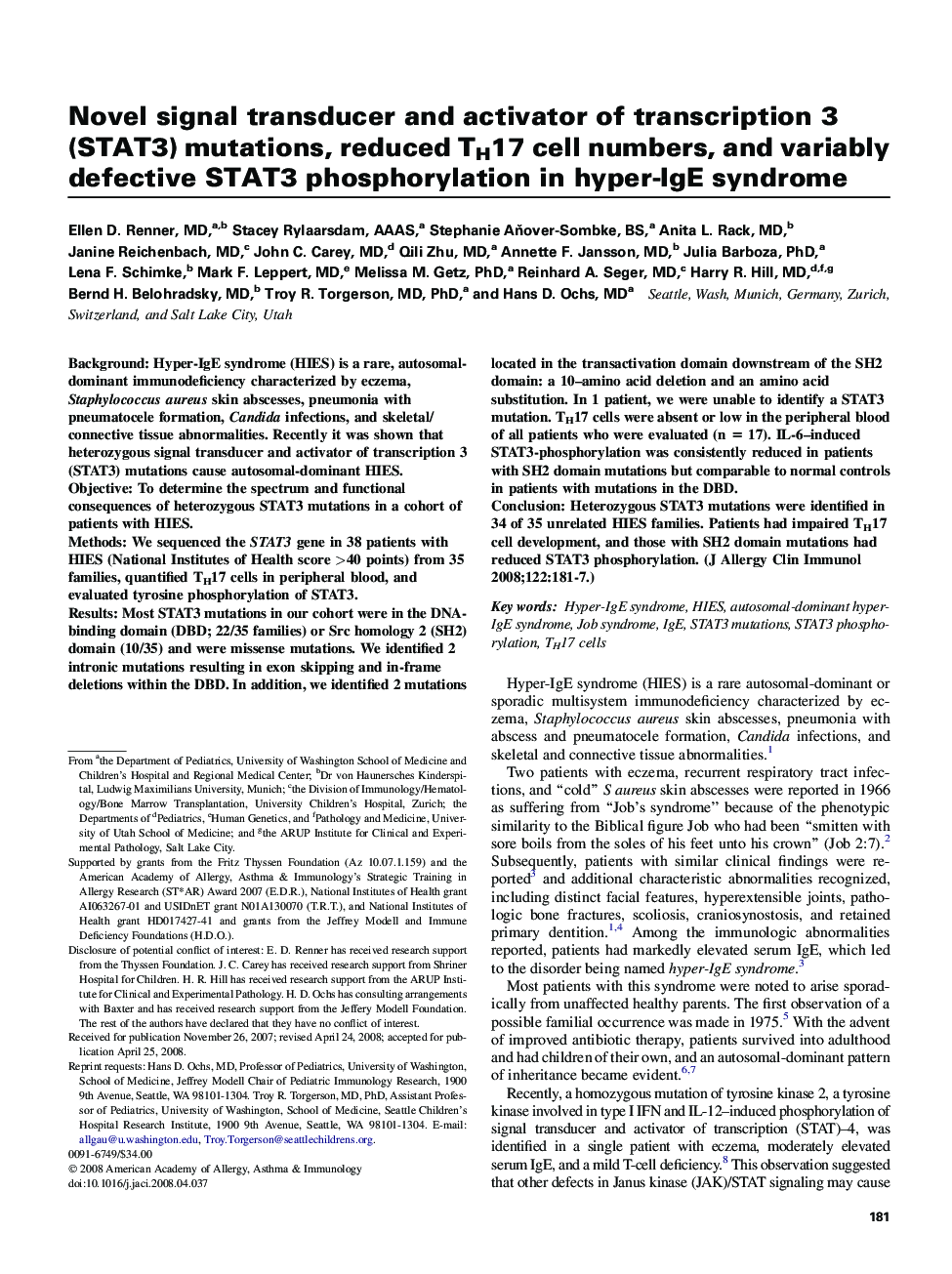| کد مقاله | کد نشریه | سال انتشار | مقاله انگلیسی | نسخه تمام متن |
|---|---|---|---|---|
| 6067905 | 1201944 | 2008 | 7 صفحه PDF | دانلود رایگان |

BackgroundHyper-IgE syndrome (HIES) is a rare, autosomal-dominant immunodeficiency characterized by eczema, Staphylococcus aureus skin abscesses, pneumonia with pneumatocele formation, Candida infections, and skeletal/connective tissue abnormalities. Recently it was shown that heterozygous signal transducer and activator of transcription 3 (STAT3) mutations cause autosomal-dominant HIES.ObjectiveTo determine the spectrum and functional consequences of heterozygous STAT3 mutations in a cohort of patients with HIES.MethodsWe sequenced the STAT3 gene in 38 patients with HIES (National Institutes of Health score >40 points) from 35 families, quantified TH17 cells in peripheral blood, and evaluated tyrosine phosphorylation of STAT3.ResultsMost STAT3 mutations in our cohort were in the DNA-binding domain (DBD; 22/35 families) or Src homology 2 (SH2) domain (10/35) and were missense mutations. We identified 2 intronic mutations resulting in exon skipping and in-frame deletions within the DBD. In addition, we identified 2 mutations located in the transactivation domain downstream of the SH2 domain: a 10-amino acid deletion and an amino acid substitution. In 1 patient, we were unable to identify a STAT3 mutation. TH17 cells were absent or low in the peripheral blood of all patients who were evaluated (n = 17). IL-6-induced STAT3-phosphorylation was consistently reduced in patients with SH2 domain mutations but comparable to normal controls in patients with mutations in the DBD.ConclusionHeterozygous STAT3 mutations were identified in 34 of 35 unrelated HIES families. Patients had impaired TH17 cell development, and those with SH2 domain mutations had reduced STAT3 phosphorylation.
Journal: Journal of Allergy and Clinical Immunology - Volume 122, Issue 1, July 2008, Pages 181-187